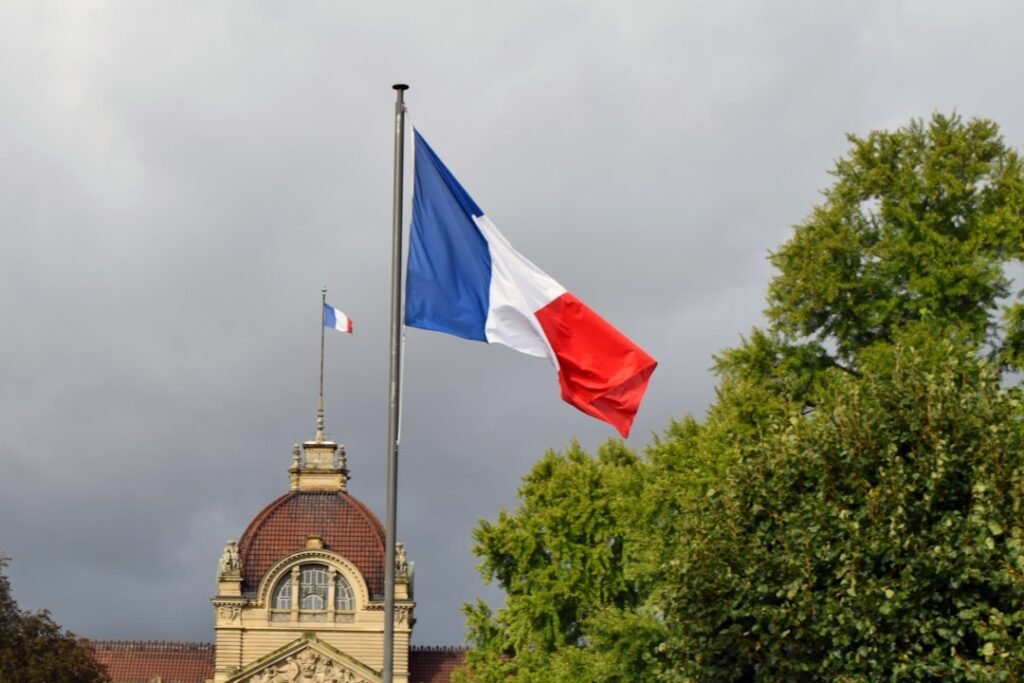

French Through Song: Musical Methods in Oslo Language Schools
Music has long been recognised as a powerful tool in the realm of education, particularly in language learning. The rhythmic and melodic qualities of music can enhance memory retention, making it easier for learners to absorb new vocabulary and grammatical structures. When students engage with music, they are not merely passive recipients of information; instead, they actively participate in the learning process.
This active engagement fosters a deeper connection to the language being studied, allowing learners to internalise linguistic concepts more effectively. Moreover, music transcends cultural barriers, providing a universal medium through which individuals can connect. In the context of language learning, this means that students are not only acquiring a new language but also gaining insights into the culture and traditions associated with it.
The emotional resonance of music can evoke feelings and memories that further enrich the learning experience. As such, incorporating music into language education is not just beneficial; it is essential for creating a holistic and immersive learning environment. Ready to say Bonjour to fluency? Your French journey starts at NLS Norwegian Language School. Enroll in a French class today!
Table of Contents
ToggleSummary
- Music can significantly enhance language learning by improving vocabulary, pronunciation, and cultural understanding.
- French songs can be effectively incorporated into language curriculum to engage students and create a multisensory learning environment.
- Using music to teach French can benefit students by making learning more enjoyable, improving listening skills, and enhancing memory retention.
- Music enhances vocabulary and pronunciation by providing context, rhythm, and repetition, which aids in language acquisition.
- French music plays a crucial role in promoting cultural understanding and appreciation, allowing students to connect with the language on a deeper level.
Incorporating French Songs into Language Curriculum
Integrating French songs into the language curriculum can transform the classroom experience, making it more dynamic and engaging. Teachers can select songs that align with the themes and vocabulary being taught, allowing students to see practical applications of their learning. For instance, a lesson on food vocabulary could be complemented by popular French songs that mention various dishes or culinary traditions.
This not only reinforces vocabulary but also provides context, making the language more relatable and memorable. Furthermore, incorporating French songs can cater to different learning styles. Auditory learners may thrive when exposed to music, while kinesthetic learners can benefit from activities that involve movement or dance to the rhythm of the songs.
By diversifying teaching methods through music, educators can create a more inclusive environment that addresses the varied needs of their students. This approach not only enhances language acquisition but also fosters a sense of community within the classroom as students share their musical preferences and experiences.
Benefits of Using Music to Teach French

The benefits of using music as a pedagogical tool in teaching French are manifold. Firstly, music can significantly enhance motivation among students. The catchy melodies and engaging lyrics of French songs can spark interest and enthusiasm for the language, encouraging learners to explore further.
When students enjoy what they are learning, they are more likely to invest time and effort into their studies, leading to improved outcomes. Additionally, music aids in developing listening skills, which are crucial for language acquisition. Through repeated exposure to French songs, students become attuned to the sounds and rhythms of the language.
This exposure helps them distinguish between different phonetic elements, ultimately improving their listening comprehension. As they sing along or listen attentively, students also practise their pronunciation, which is vital for effective communication in French.
How Music Enhances Vocabulary and Pronunciation
One of the most significant advantages of using music in language learning is its ability to enhance vocabulary acquisition and pronunciation skills. Songs often contain repetitive phrases and catchy hooks that make it easier for learners to remember new words and expressions. The repetitive nature of music reinforces vocabulary retention, allowing students to recall words more readily in conversation or writing.
Moreover, music provides an excellent platform for practising pronunciation. The melodic structure of songs encourages learners to mimic the intonation and rhythm of native speakers. This practice is particularly beneficial for French, a language known for its unique sounds and pronunciation rules.
By singing along with French songs, students can develop a more authentic accent and improve their overall speaking abilities. The combination of melody and lyrics creates a memorable learning experience that traditional methods may not achieve.
The Role of French Music in Cultural Understanding
French music serves as a gateway to understanding the rich cultural tapestry of Francophone countries. Through songs, students can explore themes such as love, social issues, history, and identity that are prevalent in French-speaking cultures. This cultural context enriches language learning by providing students with insights into the values and beliefs that shape the language they are studying.
Furthermore, engaging with French music allows learners to appreciate the diversity within the Francophone world. From traditional folk songs to contemporary pop hits, each genre reflects different aspects of culture and society. By exposing students to a variety of musical styles, educators can foster an appreciation for cultural nuances and encourage discussions about how language and culture intersect.
This understanding not only enhances linguistic competence but also promotes empathy and global awareness among learners.
Strategies for Using French Songs in the Classroom

To effectively incorporate French songs into the classroom, educators can employ various strategies that maximise engagement and learning outcomes. One approach is to use lyric analysis as a tool for comprehension. Teachers can provide students with song lyrics and guide them through discussions about vocabulary, themes, and grammatical structures present in the text.
This analytical approach encourages critical thinking while reinforcing language skills. Another effective strategy is to create interactive activities centred around music. For instance, teachers can organise sing-along sessions where students practise pronunciation while enjoying the rhythm of the song.
Additionally, incorporating movement or dance can further enhance engagement and make learning more enjoyable. By combining music with physical activity, educators can create a lively atmosphere that fosters collaboration and camaraderie among students.
Examples of Popular French Songs for Language Learning
There is an abundance of popular French songs that can be utilised in language learning contexts. Classics such as “La Vie en Rose” by Édith Piaf offer rich vocabulary related to love and beauty, making it an ideal choice for romantic themes in lessons. Similarly, “Je te promets” by Johnny Hallyday provides opportunities to explore expressions of commitment and devotion.
For contemporary learners, artists like Stromae have produced catchy tunes such as “Alors on danse,” which not only entertain but also introduce modern slang and colloquial expressions. These songs resonate with younger audiences while providing valuable linguistic insights. By selecting a diverse range of songs from different eras and genres, educators can cater to various tastes while enriching their students’ understanding of the French language.
Engaging Students through Musical Activities
Engaging students through musical activities can significantly enhance their language learning experience. One effective method is to organise karaoke sessions where students perform their favourite French songs. This not only boosts confidence but also encourages peer interaction as they share their musical preferences with one another.
Additionally, teachers can create projects where students research the background of specific songs or artists. This activity promotes cultural exploration while allowing learners to practise their research and presentation skills in French. By combining music with creative projects, educators can foster a sense of ownership over their learning journey while deepening their connection to the language.
Creating a Multisensory Learning Environment with Music
Creating a multisensory learning environment is essential for maximising student engagement and retention in language education. Music plays a pivotal role in this approach by appealing to auditory senses while also allowing for visual and kinesthetic activities. For instance, teachers can use visual aids such as music videos or lyric sheets alongside audio recordings to create a comprehensive learning experience.
Incorporating movement into musical activities further enhances this multisensory approach. Students can participate in dance routines or gestures that correspond with specific lyrics or themes in the songs they are studying. This physical involvement reinforces memory retention while making learning enjoyable and dynamic.
Overcoming Challenges in Using Music for Language Instruction
While there are numerous benefits to using music in language instruction, challenges may arise that educators must navigate effectively. One common issue is selecting appropriate songs that align with educational goals while being suitable for the age group being taught. It is crucial for teachers to carefully vet lyrics for appropriateness and relevance to ensure that they enhance rather than detract from the learning experience.
Another challenge lies in addressing varying levels of musical ability among students. Not all learners may feel comfortable singing or participating in musical activities due to shyness or lack of confidence. To overcome this barrier, educators should create an inclusive environment where all contributions are valued, regardless of musical talent.
Encouraging group participation rather than individual performances can help alleviate anxiety while fostering a sense of community within the classroom.
The Future of Musical Methods in Language Education
As education continues to evolve, the integration of musical methods into language instruction is likely to gain further traction. With advancements in technology, educators have access to an array of resources that facilitate innovative approaches to teaching languages through music. Online platforms offer vast libraries of songs accompanied by interactive tools that enhance engagement and comprehension.
Moreover, as globalisation continues to shape our world, understanding different cultures through music will become increasingly important in language education. The future will likely see a greater emphasis on cross-cultural exchanges facilitated by music, allowing learners to connect with diverse communities while honing their linguistic skills. As we embrace these changes, it is clear that music will remain an invaluable asset in the pursuit of effective language education, particularly in teaching French at institutions like the NLS Norwegian Language School in Oslo where such innovative methods are encouraged and celebrated.
If you want to learn Norwegian, you can register for classes here. We look forward to hearing from you and helping you become fluent in Norwegian.





